

From the last years of the 17th century, members of the Newbon family began arriving in the capital on a fairly frequent basis from the village of King’s Cliffe, and during the next century there remained strong family ties between London and Northamptonshire. Walter Newbon is the last known member of the family to have made the move and it was only when his children married and had children of their own that the family developed a permanent London branch, at much the time that the number of Newbons in King’s Cliffe began to diminish. Curiously, most of the early London Newbons before Walter seem to have been Richards!
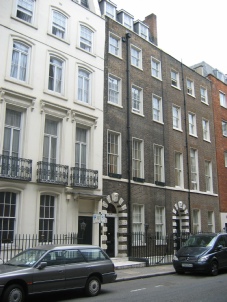
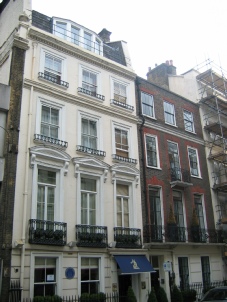
|
|
Age
|
|
|
Profession
|
|
|
Family traditions
|
|
|
Disappearance from Northamptonshire
|
|
|
The will of William Newbon the Elder (1699)
|
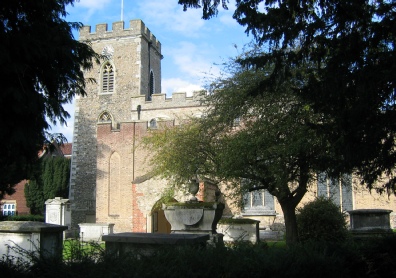
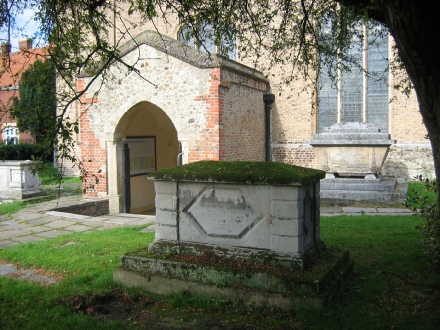

NEWBON, RICHARD. Adm. Sizar (age 16) at TRINITY, Apr. 6 , 1741. S. Of Richard, of St. James’s, London. School, London (Mr Smallwood). Matric. 1741; Scholar 1744; B.A. 1744-

the Remains
of the Revd. Richard Newbon, B.D.
Senior Fellow of Trinity College, Cambridge
and 34 years, the esteemed and respected
Vicar of this Parish
who departed this Life
March the 8th 1801
aged 79
Sacred
To the Memory of
ELIZABETH WILLOTT
Niece of the late
Revd RICHARD NEWBON
Who departed this life
21st February 1834
Aged 80 years
The Rev. Richard Newbon
The most illustrious member of the Newbon family in the 18th century was undoubtedly the Rev. Richard Newbon, only son of Richard Newbon of Westminster. His life can be charted most easily through the volume Alumni Cantabrigiensis (Alumni of Cambridge University), in which his entry reads as follows:

Enfield was a large and wealthy parish in the 18th century. The present incumbent describes it as ‘the plum living of those within the gift of Trinity College, worth up to about £3000 by the 19th century’. Richard does not seem to have left a notable mark in the church or the parish, which probably indicates he was uncontroversial and good at his job, unlike some of his successors! His tombstone can be found immediately outside the main door of the church; in the same tomb in 1834 was buried Richard Newbon’s niece, Elizabeth Willott, the daughter of his only sister, Elizabeth Newbon, who had married the Rev. Samuel Willott in 1751. The inscriptions on the tombstone read as follows:
the Rev. Richard Newbon was vicar from 1767 to 1801.
All vicars of Enfield were fellows of Trinity College, Cambridge.
his niece Elizabeth Willott at Enfield
|
|
|
|
|
|
|
|
|
|
|
Richard Newbon |
|
|
|
|
||
|
|
|
|
|
|
|
|
|
|
|
|
|
|
|
|
|
|
|
|
|
|
|
|
|
|
|
|
|
|
William Newbon the Elder |
|
|
|
|
|
|
|
|
|
|
|
|
|
|
|
|
|
(1634- |
|
|
|
|
|
|
|
|
|
|
|
|
|
|
|
|
|
|
|
|
|
|
|
|
|
|
|
|
|
|
|
|
|
|
|
|
|
|
|
|
|
|
|
|
|
|
|
William Newbon |
John Newbon |
|
Richard Newbon |
James Newbon |
Robert Newbon |
||||||
|
|
|
|
|
|
the Younger |
(1688- |
|
the Elder |
the Elder |
(1678- |
||||||
|
|
|
|
|
|
(1667- |
|
|
|
(of Westminster) |
(1676- |
|
|
||||
|
|
|
|
|
|
|
|
|
|
|
|
(1673- |
|
|
|
|
|
|
|
|
|
|
|
|
|
|
|
|
|
|
|
|
|
||
|
William Newbon |
James Newbon |
Henry Newbon |
Walter Newbon |
|
Rev. Richard Newbon BD, MA |
Richard Newbon |
Thomas Newbon |
|||||||||
|
(1691- |
the Younger |
(1694- |
(1698- |
|
of Blackfriars |
(1717- |
||||||||||
|
|
|
(1692- |
|
|
|
|
|
|
|
(1721- |
(1709- |
|
|
|||
|
|
|
|
|
|
|
|
|
|
|
|
|
|
|
|
|
|
|
|
|
|
|
|
|
|
|
|
|
|
|
|
|
|
|
|
|
|
William Newbon |
James Newbon |
|
|
Ann Dixon |
= |
William Newbon |
|
John Newbon |
|
||||||
|
|
the Miller |
(1718- |
|
|
(c1743- |
|
of Blackfriars |
|
(1747- |
|
||||||
|
|
(1717- |
|
|
|
|
|
|
|
|
(1737- |
|
|
|
|
||
|
|
|
|
|
|
|
|
|
|
|
|
|
|
|
|
|
|
|
|
|
|
|
|
|
|
|
|
|
|
|
|
|
|
|
|
|
Thomas Newbon |
Walter Newbon = |
Ann Newbon |
|
|
|
|
|
|
|
|
|
|||||
|
(1743- |
(1750- |
(formerly Dixon) |
|
|
|
|
|
|
|
|
|
|||||
|
|
|
|
(c1743- |
|
|
|
|
|
|
|
|
|
||||
|
|
|
|
|
|
|
|
|
|
|
|
|
|
|
|
|
|
|
The only individuals featured on this family tree who are known not to have been born in Northamptonshire are as follows: The Rev. Richard Newbon was born in Westminster in 1721. William and John Newbon, sons of Richard Newbon of Blackfriars, were born in Blackfriars in 1737 and 1747 respectively. Ann Dixon was born in Westminster c1743. |
||||||||||||||||

Richard Newbon of Westminster (aka Richard Newbon the Elder)
During the last few years of the 17th century a Richard Newbon appears on a regular basis in the records of Westminster. There is no direct evidence to link him to the Newbon family of Northamptonshire but I believe there are so many possible connections that they are unlikely to be coincidental. It thus seems highly likely that Richard Newbon of Westmindter was Richard Newbon the Elder, the son of William Newbon the Elder of King’s Cliffe.
Richard Newbon of Westminster married Elizabeth Aslaby (also sometimes spelt Aslabie and Aislabie) at the Church of St Clement Danes in 1719. At that time he was a widower; although his first marriage has not been
Individuals featured on this page:
To Top of Page
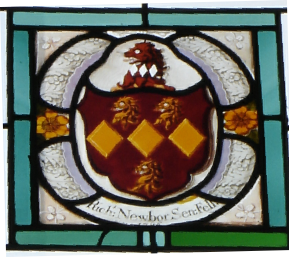
| Site Map |
| Background to my research |
| Background to the surname NEWBON |
| Documents available and sources used |
| Name index |
| Walter Newbon's descendants |
| Northamptonshire Newbons |
| Redbourn, Hertfordshire |
| James Shelton Newbon |
| Henry Newbon |
| The Crickmer family |
| The Newbon Family and the City of London |
| Charles Evans Newbon |
| Joseph Newbon |
| The Brockelbank Family |
| The United Wards' Club of the City of London |
| John Newbon |
| The Children of John Newbon |
| World War I |
| Walter Thomas Newbon |
| The Newbon Family of Northamptonshire |
| Northamptonshire, the early home of the Newbon Family |
| King's Cliffe |
| Records of King's Cliffe |
| Maps of King's Cliffe |
| Links with elsewhere |
| News 2014 |
| News 2013 |
| News 2012 |
| News 2011 |
| News 2010 |
| News 2009 |
| News 2008 |
| Updates |
| To do |
| Guestbook |